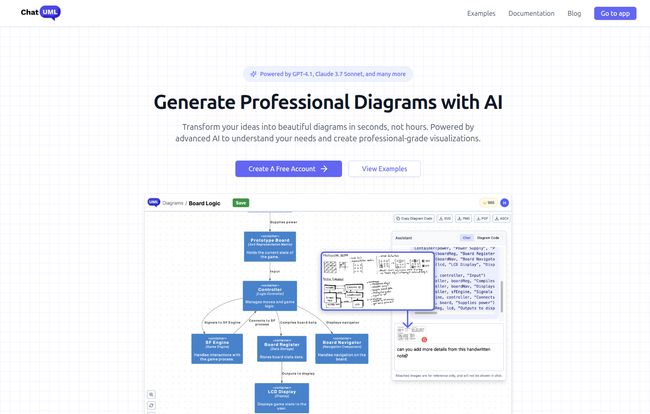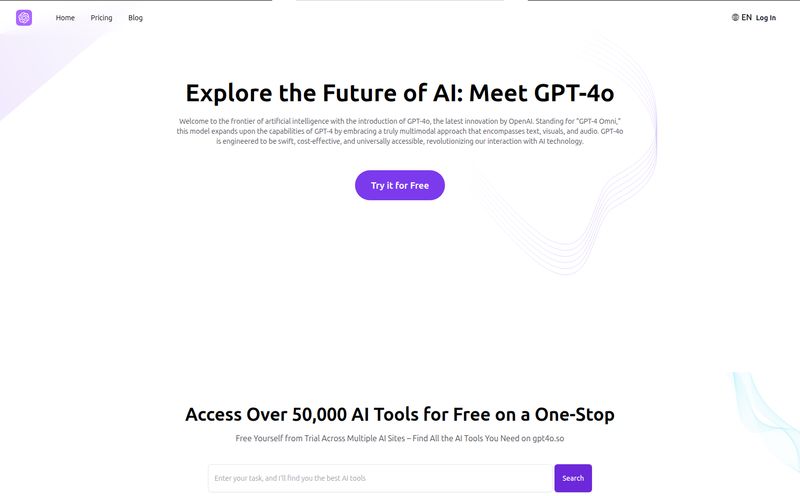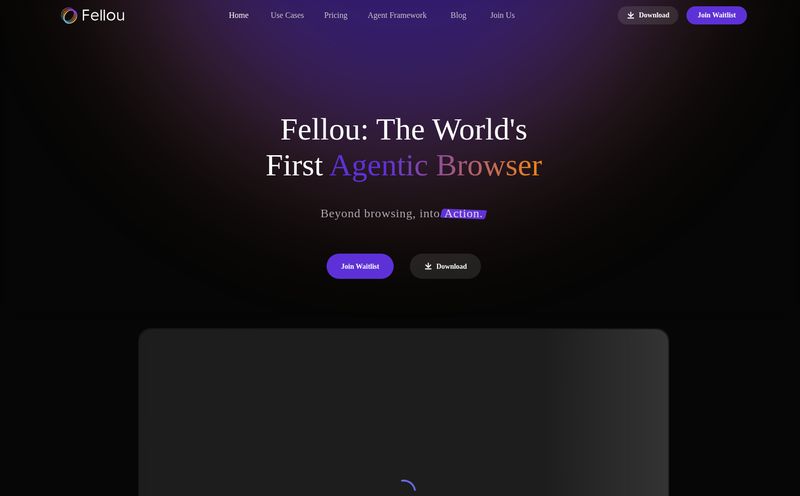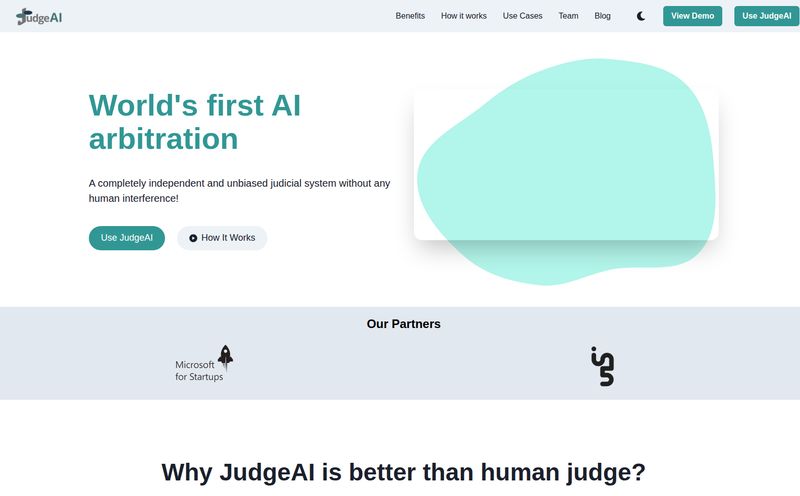If you've ever worked in tech, marketing, or project management, you've felt the pain. The soul-crushing, mind-numbing agony of making a flowchart. Or a UML sequence diagram. Or even just a simple sitemap. It's a world of endless dragging, dropping, snapping to grids that never quite snap, and aligning boxes until your eyes cross. It's digital dentistry. You know it’s good for you, but you dread every moment of it.
I've spent more hours than I care to admit wrestling with tools that promise simplicity but deliver a masterclass in frustration. So when I stumbled upon a tool called ChatUML, which claimed to generate professional diagrams with AI, my inner cynic just rolled its eyes. "Here we go again," it muttered. But my curiosity, the one that keeps me knee-deep in SEO trends and new tech, got the better of me. And I'm glad it did.
This isn’t just another tool review. This is the story of how I went from a diagram-hater to someone who... well, still doesn't love making diagrams, but no longer sees it as a trip to the ninth circle of hell.
So, What on Earth is ChatUML?
In the simplest terms, ChatUML is an AI copilot for your diagrams. Think of it less like a drawing tool and more like a translator. You give it your jumbled thoughts—either by typing them out in plain English or, and this is the cool part, by uploading a crude sketch—and it translates them into a clean, professional-looking diagram. It's built to handle all the usual suspects: sequence diagrams, flowcharts, UML, BPMN for the business process folks, C4 architecture diagrams for the serious developers, and even mindmaps.
It's powered by PlantUML, a well-respected open-source tool that uses a simple textual description language to create diagrams. But the beauty of ChatUML is that you don't really need to know PlantUML syntax. The AI, running on models like GPT-4 and Claude 3, acts as your intermediary. You talk, it codes the diagram. Magic.
My Favorite ChatUML Features (The Ones That Genuinely Impressed Me)
A feature list on a homepage is one thing. Seeing it work is another. Here’s what actually stood out when I got my hands dirty.
From Napkin Sketch to Polished Diagram
This is the showstopper. The Sketch to Diagram feature. I have a graveyard of notebooks filled with spidery, barely-legible flowcharts I've scrawled down during meetings. The thought of manually recreating them on a computer is what fuels my procrastination. So I put ChatUML to the test. I snapped a photo of a particularly messy user flow I had sketched for a client's website. I uploaded it, held my breath, and… it worked. It wasn’t 100% perfect on the first try, but it was about 90% of the way there. It correctly identified the boxes, the arrows, the decision diamonds. A few minutes of text-based editing later, and I had a diagram that would have taken me a solid hour of fiddling. My jaw, I admit, dropped a little.
The "Website to Diagram" Trick for SEOs
Okay, this one felt like it was made for me. With the Website to Diagram feature, you just plug in a URL, and it attempts to generate a diagram based on the website's content and structure. Is it going to give you a perfect, granular sitemap? No. But for quick-and-dirty competitor analysis or just trying to get a high-level overview of a site's architecture, it's incredibly fast. I used it to map out a competitor's main service pages and it gave me a solid starting point for a content gap analysis. It's a clever idea that saves a ton of manual clicking and mapping.
Plain English is All You Need to Know
The core of the experience is its natural language processing. Instead of learning a new interface with a million tiny icons, you just… talk to it. For example, I typed: "Create a flowchart for a user logging in. The user enters their email and password. If the details are correct, they go to the dashboard. If they are incorrect, show an error message and let them try again." A few seconds later, a neat little flowchart appeared. The ability to just describe what you want is a massive time-saver.

Visit ChatUML
How Does ChatUML Work in Practice?
The process is refreshingly simple, and it follows the three steps they advertise on their site. First, you Describe Your Needs. This is where you either type your prompt, like my login example, or upload that blurry photo of your whiteboard sketch. Second, the AI Magic happens. The tool analyzes your input and generates the diagram. You can see the PlantUML code it creates on one side and the visual diagram on the other, which is great for learning or for making manual tweaks if you're so inclined. Third, you Export & Share. You can download the diagram in various formats (like PNG or SVG) or just share it directly with your team. It’s a straightforward workflow that gets out of your way.
The Big Question: What’s the Catch?
Alright, it can't all be sunshine and automatically generated diagrams. There are a few things you need to know before you jump in. I'd call them less 'cons' and more 'things to be aware of'.
The Credit System Explained
ChatUML operates on a credit system. You use one credit each time you generate a new diagram from a prompt. The good news is that editing an existing diagram by tweaking the text prompt or the generated code does not consume more credits. This is a fair system, as it encourages iteration. But yes, every time you hit that "generate" button on a fresh idea, a credit goes poof.
The Pricing Mystery
So, how much do these credits cost? That's a fantastic question. As of writing this, their pricing page leads to a 404 error—"No page could not be found." A little typo there, guys. It gives the impression that the pricing structure might be in flux or they're still figuring it out. You do get a handful of free credits when you sign up, which is enough to test the core features and see if it works for you. After that, you'll presumably need to buy a credit pack, but the cost remains a bit of a mystery. Transparency here would be a huge plus.
A Few Other Gotchas
A couple of other points from their FAQ are worth noting. First, there are no refunds on used credits. This is pretty standard for services that rely on expensive third-party AI APIs (like GPT-4). Every time you generate, it costs them real money, so they can't really refund it. Makes sense. Second, it seems to be a desktop-only application. Not a huge deal for me, as I do this kind of work at my desk anyway, but something to be aware of if you're a tablet warrior.
Who Is ChatUML Actually For?
I can see a few groups getting a lot of mileage out of this:
- Software Engineers & Architects: Quickly roughing out system designs, sequence diagrams, or C4 models without breaking their coding flow.
- Project & Product Managers: Creating user flows and business process models from meeting notes in minutes, not hours.
- SEOs & Digital Marketers: Like me! Mapping out site structures, user journeys, and content funnels with the Website-to-Diagram feature.
- Students & Educators: A fantastic learning tool for visualizing complex concepts without getting bogged down in the software.
Frequently Asked Questions
Do my ChatUML credits ever expire?
Nope! According to their site, the credits you buy never expire. You can use them whenever you need them, which is great for occasional users.
Can I get a refund for credits I already used?
Unfortunately, no. Because each diagram generation uses third-party AI services that cost money, they can't offer refunds on credits that have been spent. So, use your initial free credits wisely to make sure it's the right tool for you.
Does ChatUML use my data for AI training?
This is a big one for privacy. They state clearly that your prompts and data are not used for training any AI models. They are processed by their third-party AI partners but governed by a strict data privacy policy.
What kind of diagrams can I even make?
A whole bunch. The main ones are sequence diagrams, flowcharts, various UML diagrams, BPMN, C4 architecture diagrams, and mindmaps. It covers a lot of the common business and technical use cases.
Do I have to be a coder to use this?
Absolutely not. That's kind of the whole point. If you can describe what you want in a sentence or draw a messy version of it, you can use ChatUML.
Final Thoughts: Is This AI Diagram Generator Worth It?
So, here's the bottom line. ChatUML isn't going to replace the need for complex, pixel-perfect design work in a tool like Figma or Illustrator. That's not what it's for. Its purpose is to eliminate the initial friction of getting an idea out of your head and into a visual format. It's about speed and convenience.
For me, the trade-off of using credits for the sheer speed and the magic of the Sketch-to-Diagram feature is a no-brainer. It has already saved me hours of what I consider to be low-value, high-frustration work. The pricing model is a bit of a question mark, but the tool itself is solid. It's one of the first AI tools I've used that feels less like a gimmick and more like a genuine productivity enhancer.
It has made me rethink my workflow for creating diagrams. And in our line of work, any tool that saves you from a headache and lets you focus on the actual thinking part is a massive win in my book.



